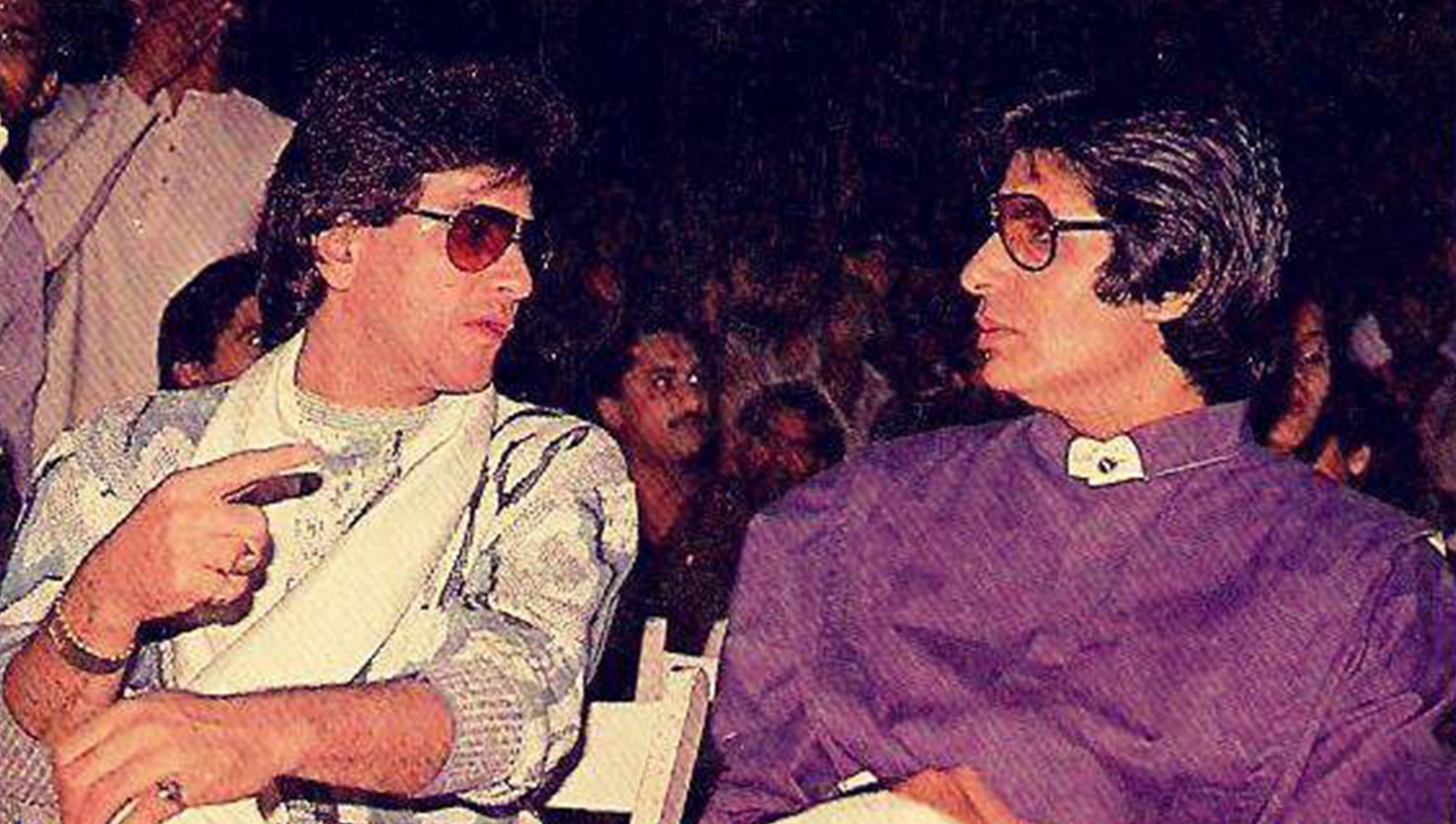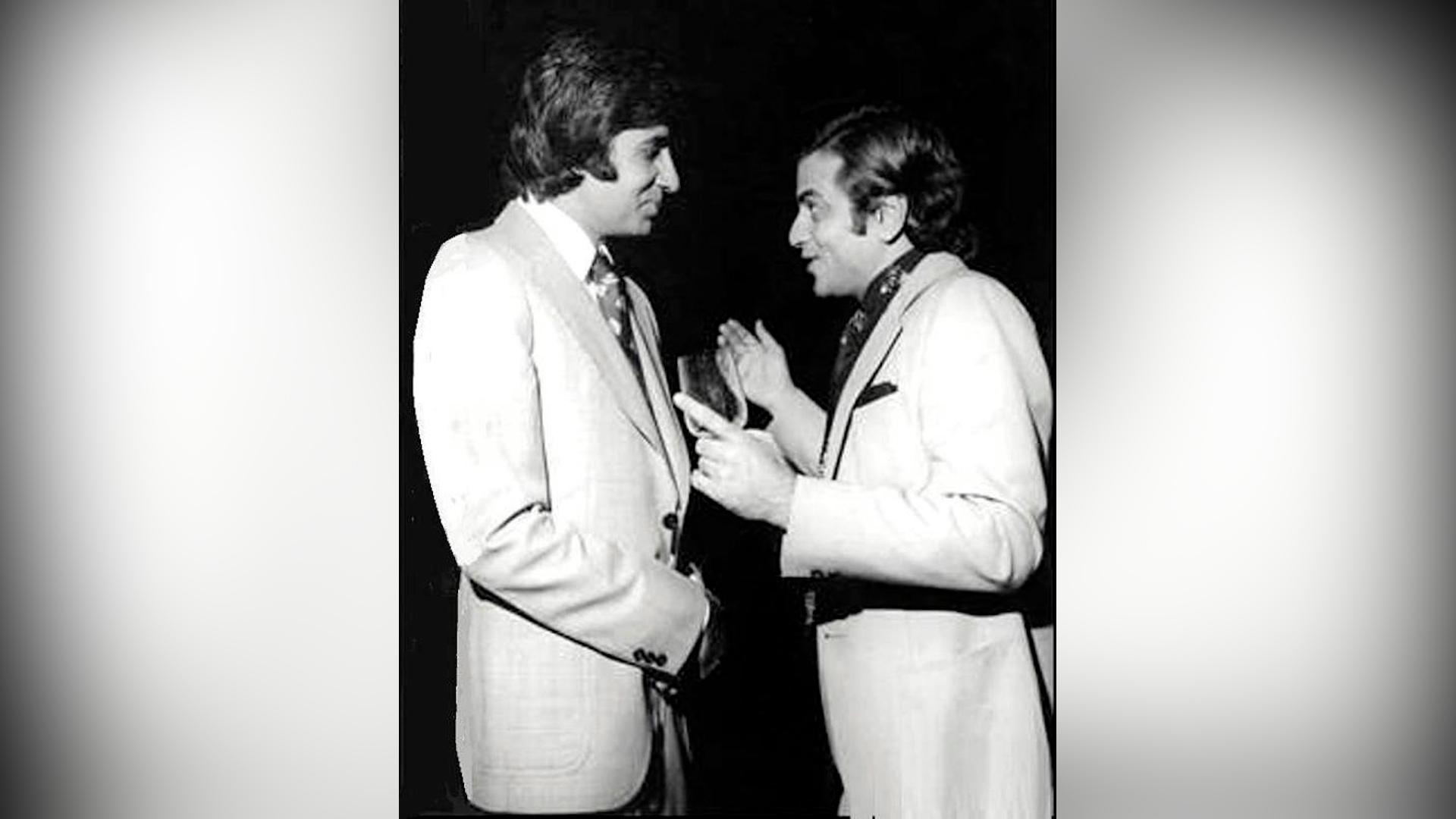“If the doors of perception are cleansed everything would appear to man as it is, infinite.”: William Blake
Perception often supersedes bland reality. Anodyne facts are tossed out of the window, as they don’t make for an exciting reading, and exalted hyperboles are whipped up to spellbind the hoi polloi.
In regard to Bollywood of the 1970s and 1980s, the perception that is relentlessly drilled into our collective psyche is that Amitabh Bachchan was the one man industry who reigned supreme for two decades without a competitor in sight. But was it the reality?
Bachchan was slalomed to stardom in 1973 with the release of ‘Zanjeer’. A landmark film, it created the ‘Angry Young Man’ prototype which became Bachchan’s cognomen. By 1973, the fortunes of the reigning superstar Rajesh Khanna were on the wane and the numero uno position was up for grabs.
So, did Bachchan become no.1 straightaway in 1973 after ‘Zanjeer’? Of course not. Khanna still had some gas left in the tank as he dished out two superhits ‘Roti’ and ‘Prem Nagar’ to hang on to his position. But the man who was to become the numero uno for the next four years was Dharmendra.
Dharmendra had an incredible run from 1969-1977 as he whipped out more than 20 hits during the period. While he remained in Khanna’s shadows till 1972, in 1973, the ‘He-Man’ became the first actor to crank out 4 clean hits in a year – ‘Yaadon Ki Baarat’, ‘Jugnu’, ‘Loafer’, and ‘Kahani Kismat Ki’.
Between 1973-1977, it was Dharmendra, not Bachchan, who was the no.1 superstar. In ‘Sholay’, it was Dharmendra who got the top billing and reinforced his position with blockbusters such as ‘Pratigyaa’, ‘Chacha Bhatija’ and ‘Dharam Veer’ in the next two years. Bachchan’s ‘Do Anjaane’ and ‘Kabhi Kabhie’ paled in comparsion at the turnstiles.
Bachchan dethroned Dharmendra and occupied the no.1 position in 1978 by reeling off three biggest grossers of the year – ‘Muqaddar Ka Sikandar’, ‘Trishul’ and ‘Don’. For the next three years, Bachchan remained undisputed numero uno and it seemed that his untrammeled domination would last for posterity.
In 1980, suddenly, a bolt came from the blue. Jeetendra, who remained out of the top league during the 1970s, sprang a surprise on the ‘Angry Young Man’ as he delivered three hits in a year, including a blockbuster ‘Aasha’. ‘Jyoti Bane Jwala’ and ‘Judaai’ also set the cash registers ringing and proved supremely profitable ventures. Bachchan, on the other hand, was scarred by the underperformance of his much-awaited films such as ‘Shaan’ and ‘Ram Balram’. He pumped out a superhit ‘Dostana’, but its collections (Rs 4.5 crore net approx) were less than Jeetendra’s ‘Aasha’ which rang up Rs 6 crore net.
Though Bachchan consolidate his position in 1981 with hits such as ‘Naseeb’ and ‘Lawaaris’, Jeetendra gave him a jolt as his ‘Meri Awaaz Suno’ took a much bigger opening – a sigil of stardom – than Bachchan’s ‘Kaalia’ which were released within a week of each other.
In 1982, Bachchan once again proved his mettle with ‘Namak Halal’ and ‘Khuddar’, but he couldn’t keep the ‘Jumping Jack’ at bay as he also churned out a superhit ‘Farz Aur Kanoon’.
One important thing to note here is that Bachchan, though he remained no.1 overall, failed to deliver the biggest grosser in 1980, 1981 and 1982 even during the pinnacle of his stardom. ‘Qurbaani’, ‘Kranti’ and ‘Vidhaata’ were the biggest grossers of 1980, 1981 and 1982 respectively.
A superstar who couldn’t deliver the biggest grosser of the year in his pomp, despite the backing of biggest directors, can’t really be hailed as the ‘one-man industry’. Compare that with Salman Khan, who effortlessly churned out biggest grosser of the year three times in a row – ‘Dabangg’ (2010), ‘Bodyguard’ (2011) and ‘Ek Tha Tiger’ (2012) – which is an unparallaeled record.
Anyway, the ‘Jumping Jack’ almost toppled Bachchan in 1983 with superhits such as ‘Himmatwala’, ‘Mawaali’ and ‘Justice Chaudhary’. It was a phase when Jeetendra was mostly starring in the Southern movies and minting moolah. Bachchan saved the day in the nick of time as his ‘Coolie’ released in December 1983 1983 and became a huge hit largely because of the sympathy wave. For the unversed, Bachchan was severely injured on the sets of ‘Coolie’ and the entire country prayed for him when he was in the hospital.
1984 was the apogee of Jeetendra’s stardom and career as two biggest grossers of the year – ‘Tohfa’ and ‘Maqsad’ – belonged to him. Both of them comprehensively outstripped Bachchan’s ‘Sharaabi’ at the turnstiles.
Jeetendra continued to dish out hits such as ‘Swarg Se Sunder’, ‘Sanjog’, ‘Khudgarz’, ‘Jaal’ and ‘Sindoor’, as a leading man till 1987.
Overall, between 1980-87, he delivered 15 hits, many of them were blockbusters, while Bachchan had 11 hits to his credit ion the same period. While Bachchan had celebrated directors such as Manmohan Desai, Prakash Mehra and Ramesh Sippy backing him to the hilt, Jeetendra earned his spurs by working with lesser names.
It is important to note that some of Amitabh’s hits collected more than Jeetendra’s hits during the stipulated period but their budget was also much higher. A few films of Bachchan such as ‘Shaan’, ‘Shakti’ and ‘Ram Balram’ were declared flops despite doing good business because distributors lost money. On the other hand, Jeetendra’s movies were moderately budgeted and sold at reasonable price, hence were supremely profitable ventures for everyone.
“Amitabh is a white horse whose films are made at prohibitive budgets and sold at fancy prices. In case of his films, the profits are moderate while the risk is massive for producers and distributors due to the high cost. Jeetendra, on the other hand, is a safe bet. His films are moderately budgeted and fetch bountiful returns for the distributors and producers,” noted Gulshan Rai, the then leading distributor and producer.
There is no doubt that Bachchan was immensely popular and remained no.1 till 1985, despite Jeetendra unrelentingly snapping at his heels, though the myth of him being the no.1 to 10 during his heyday is utterly and decisively apocryphal.
Jeetendra had leapt to limelight in 1967 with a superhit ‘Farz’ and became a saleable star in the next couple of years with hits such as ‘Khilona’, ‘Humjoli’ and ‘Waris’. He was given the sobriquet ‘Jumping Jack’ for his exuberant dancing finesse but his acting felicity wasn’t written about as enthusiastically. In the 1970s, he largely remained sedate as Khanna, Bachchan, Dharmendra, Manoj Kumar and Rishi Kapoor occupied the public imagination.
The biggest achievement and the highlight of Jeetendra’s career remains giving a stiff competition to Bachchan, and almost dethroning him, in the 1980s without the support of illustrious directors.
The ‘Jumping Jack’ vehemently challenging the hegemony of the ‘Angry Young Man’ at the ticket-counters in the 1980s is an established fact and deserves a special mention in Bollywood’s history.
Source for Box-Office collections and verdicts: Film Information and Box Office India










